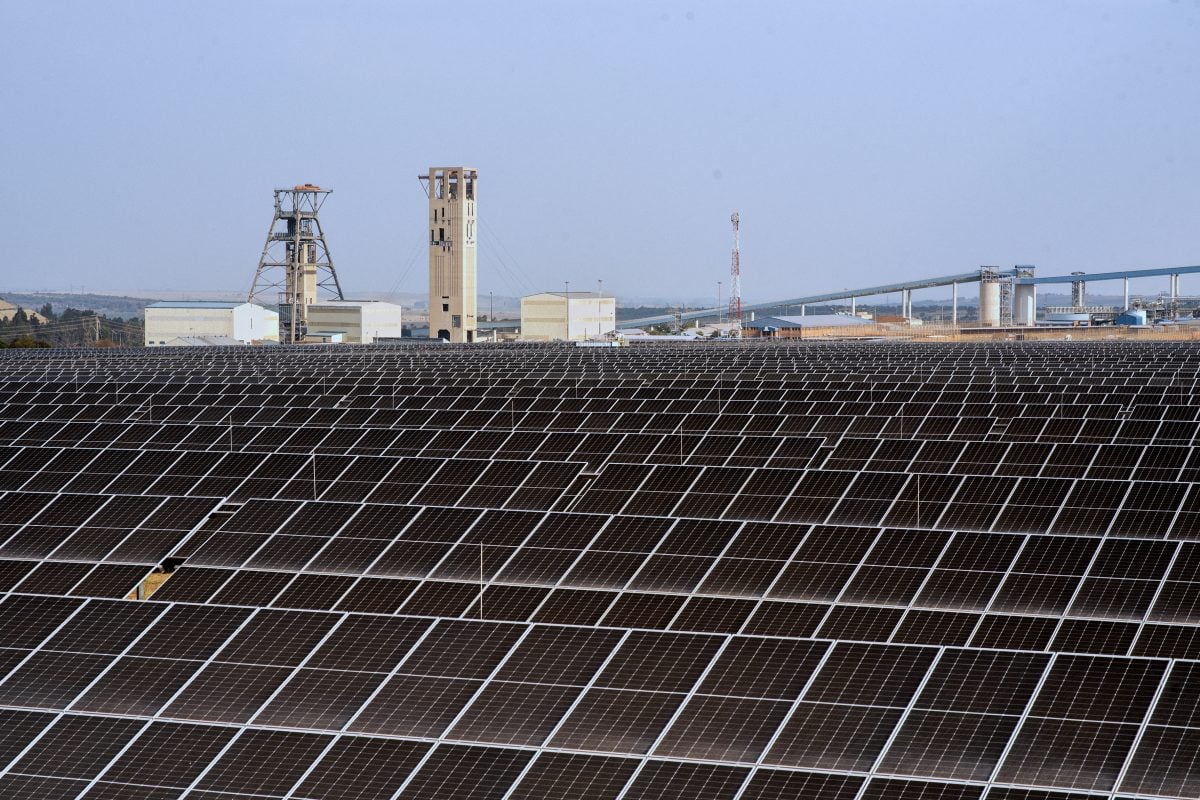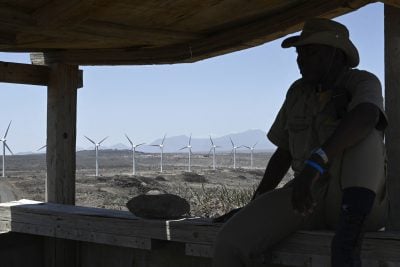In 2018, at the Otjikoto mine in Namibia, B2Gold unveiled what was then an unusual sight at an African mining operation – an installation of solar panels.
The 6 MW solar facility, which also included a battery storage (BESS) component, now provides around 13% of the mine’s power, according to the company. Ken Jones, B2Gold’s director for sustainability, says the company was mainly motivated by the need to reduce its carbon footprint.
“Climate risk management is really what it’s about,” he says. “You can’t decarbonise the rest of your operation until you clean up your electricity generation”
B2Gold, like many mining companies operating in remote parts of the continent, has historically relied on purpose-built heavy fuel oil (HFO) plants to provide power. It has now been able to put its HFO plant at Otjikoto under care and maintenance after deploying solar power and connecting to the Namibian electricity grid in 2023. The company has also invested in solar at its other African operation, at Fekola in Mali, where solar and storage will soon deliver around 30% of the mine’s electricity.
Jones tells us that solar has proven reliable at the mines in Namibia and Mali. “These facilities have more than performed. They’ve met and actually exceeded projections and modelling.”
He adds that the expansion of its solar project in Mali will allow B2Gold to avoid using HFO during the daylight hours.
“We’re the first company of this size and scale to be able to turn off all of our thermal engines during the day,” he says.
Cost advantages
Jones says that while cost was a factor, alongside climate, in deciding to invest in solar, he notes that, back in 2018, “the economics were good, but not outstandingly great.”
The company decided to proceed regardless, owing to its decision to prioritise its emission reduction efforts.
But cost is now a simpler reason why solar power is gaining broader traction among mining companies.
“The cost of actually converting to renewable hybrid power solutions is far cheaper than it ever has been. Especially in the past 18 months, you’ve seen battery prices plummet,” says James Shoetan, chief commercial officer at CrossBoundary Energy, a company investing in distributed renewable energy projects across the continent.
“We’re seeing baseload renewables can be 20-30% cheaper than a full thermal fleet.”
“We’ve reached a product-market fit,” he says. “Where you’re clearly showing benefits to the client, the demand tends to open up quite drastically.”
Roberto Berardo, senior vice president for mining and industries at solar developer Release by Scatec offers a similar view. “We started four and a half years ago,” he says.
“At that stage, it was hard to get mining companies to talk about renewables. Now, almost every new, upcoming mining company that cannot rely on a stable grid will definitely be looking at alternative sources of energy, like renewables, and particularly solar. This is becoming very much a standard for the industry.”
“We’re seeing the lowest cost ever, both for solar generation, but also on the battery energy storage. And I think there is still room for improvements, especially on the BESS.”
“Most, if not all, of the new, upcoming mines will have solar in their mix,” says Berardo. “And then there are the operating mines, where we think there is even more opportunity to do something immediately to displace some of the polluting and expensive fuel.”
Berardo notes that mining companies account for the majority of the 13 GW of HFO consumed in the continent (outside of South Africa) currently. HFO plants are among the most polluting ways to generate electricity and are considered obsolete in much of the world. But, so far, less than 1 GW of HFO demand in Africa has been displaced by renewables, Berardo suggests.
He believes operating mines will be slow to switch towards renewables unless there is an immediate financial incentive. Tising fuel prices are causing economic difficulties; but he also says that mines are less likely to make the switch during times when commodity prices are high, since they are then under less financial pressure to reduce costs.
“Especially at an operating mine, it’s often hard for them to make the change unless they see an immediate and tangible relief of pressure,” he says. While heavily-scrutinised mining giants might invest in solar as part of their net-zero commitments, he adds that smaller companies are primarily motivated by costs.
“If you’re talking about mid-sized or junior mining houses, whether or not to bring in renewables will be very much the result of commodity prices and fuel prices. Unless it’s a pressure point today, it’s still unlikely to be actioned immediately.”
Scaling solar
Shoetan points out that as technology improves and costs come down, larger renewable projects are becoming viable at mine sites.
“When I first started, we were looking at projects that would provide 6% renewable energy contributions, whereas now pretty much everything I’ve seen is above 20% and sometimes we’re even looking at near total renewable energy solutions.”
“We have two solutions that we’re actually working on that are near 100%,” he says. “And so that is quite encouraging to me, because what we’re saying now is that renewables in Africa can provide baseload solutions, which is a game changer.”
But challenges remain in increasing the share of renewables in the energy mix of mining companies. Jones says that B2Gold would need to invest in wind power if it is to further reduce its carbon emissions at Fekola in Mali.
Solar with battery storage to cover the night is “just not cost-effective”, he says.
“You can’t have a big enough battery to run a mill through the night. You have to complement this with wind or other renewables.”
Another common constraint is that there is not always enough land adjacent to mine sites for large-scale solar or wind installations. A way around this can be found in the form of “wheeling”, in which electricity is generated from renewable sources in one location, and then distributed to the customer via the national energy grid.
Wheeling is relatively well-established in South Africa, but only just starting to emerge elsewhere. B2Gold will use a wheeling arrangement to purchase electricity from a 10 MW solar plant in Namibia, which it expects to be commissioned in February 2025.
Berardo notes, however, that though wheeling is “becoming more of an opportunity” in countries such as Namibia and Zimbabwe, regulatory constraints and an absence of grid infrastructure mean this solution is not viable everywhere. “We don’t think wheeling is going to be necessarily the unicorn solution for all these mines, because utilising the utility infrastructure as a sort of a battery bank is a short-term solution.”
Despite the remaining technical and commercial challenges, the recent progress in ramping-up renewables across the continent’s mine sites illustrates what is possible. And, with Africa set to play a vital role in supplying critical minerals for the global energy transition, the importance of reducing the mining industry’s own carbon footprint is more important than ever.
“The outlook is fantastic,” says Shoetan. “I think it’ll continue to grow. We’ll see larger and larger solutions.”
Want to continue reading? Subscribe today.
You've read all your free articles for this month! Subscribe now to enjoy full access to our content.
Digital Monthly
£8.00 / month
Receive full unlimited access to our articles, opinions, podcasts and more.
Digital Yearly
£70.00 / year
Our best value offer - save £26 and gain access to all of our digital content for an entire year!

 Sign in with Google
Sign in with Google 



